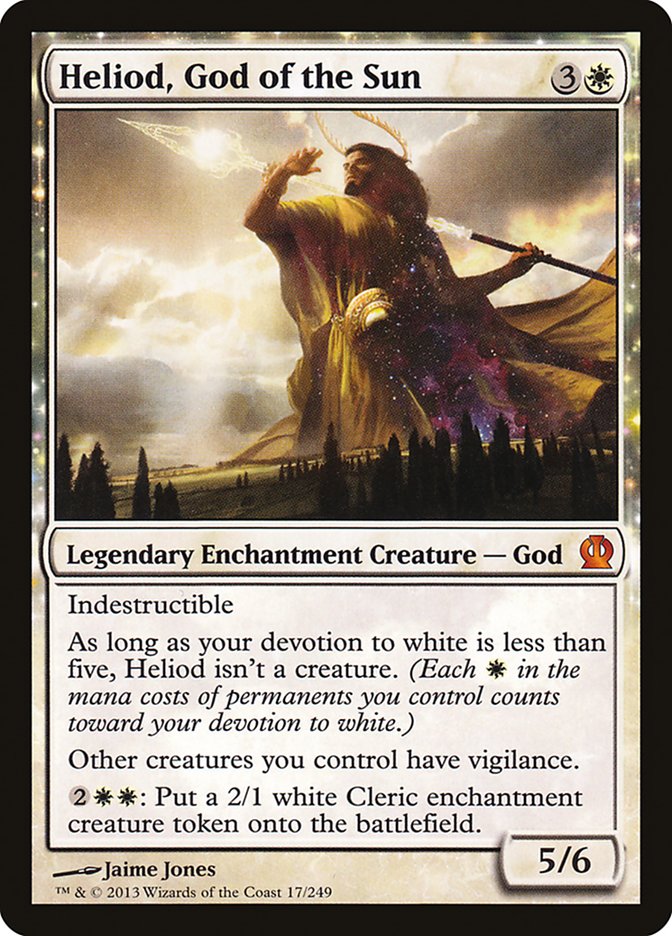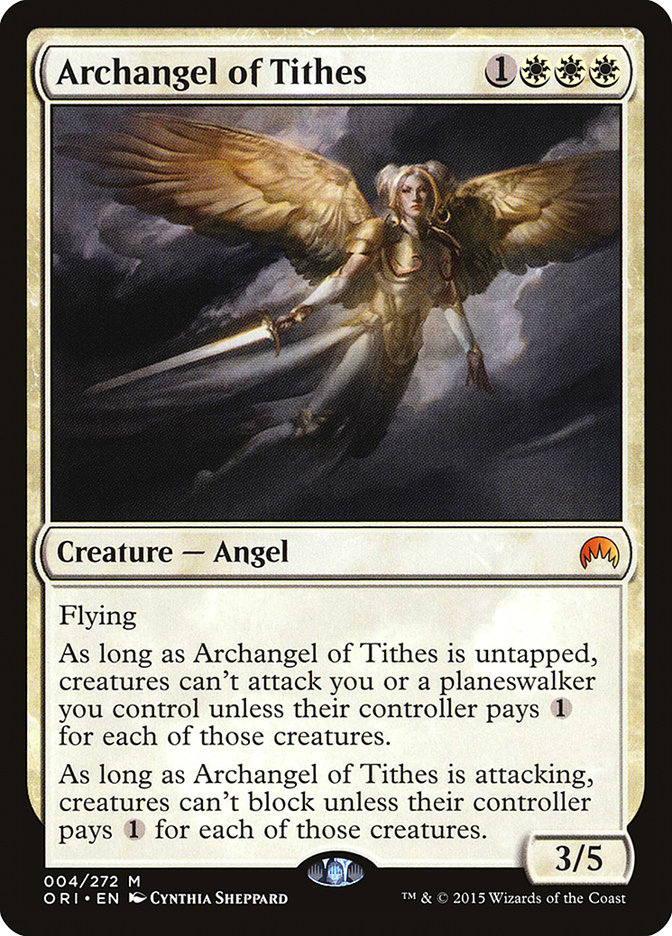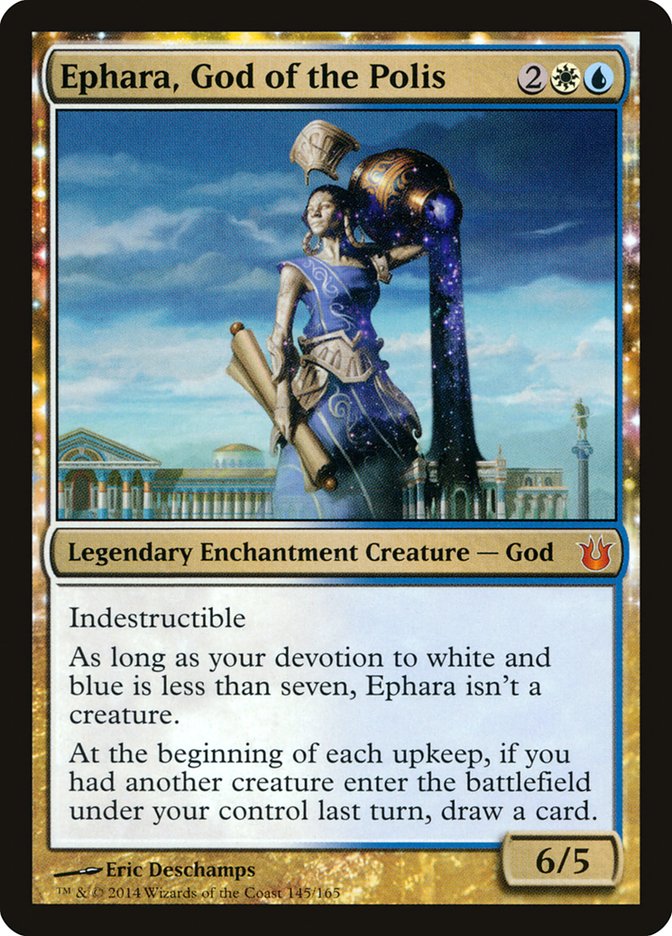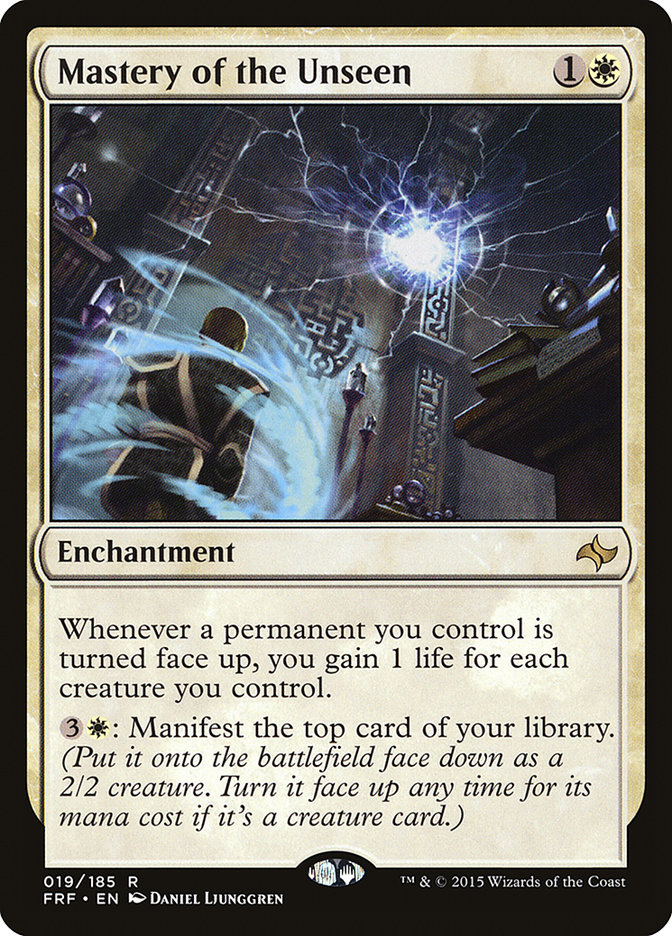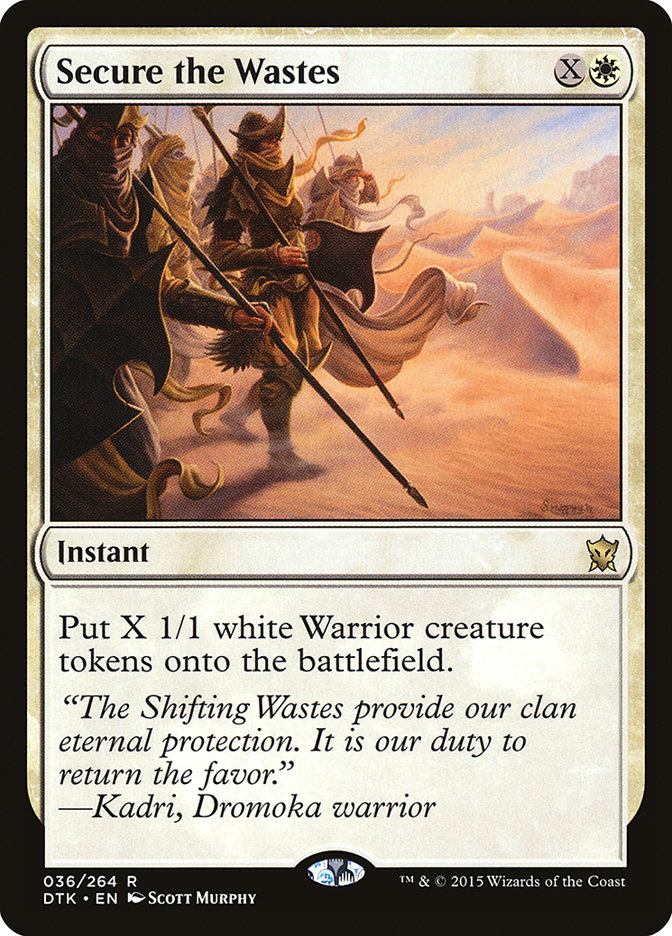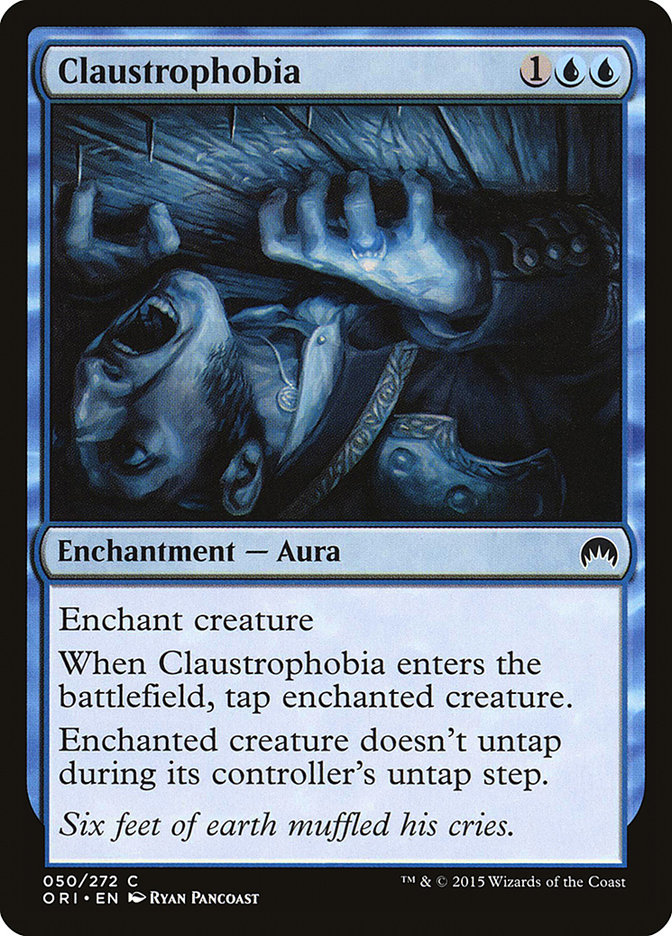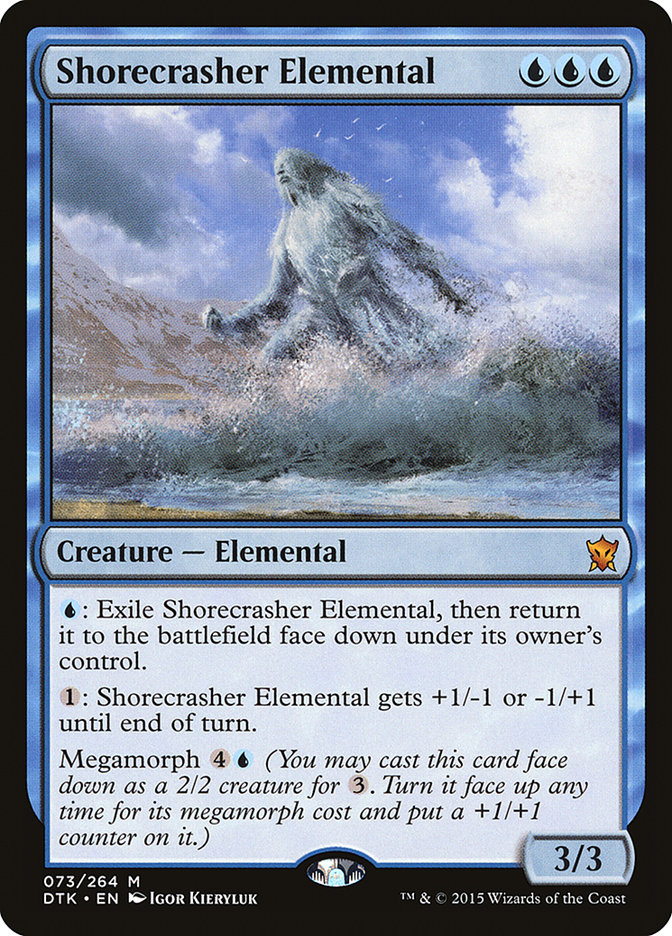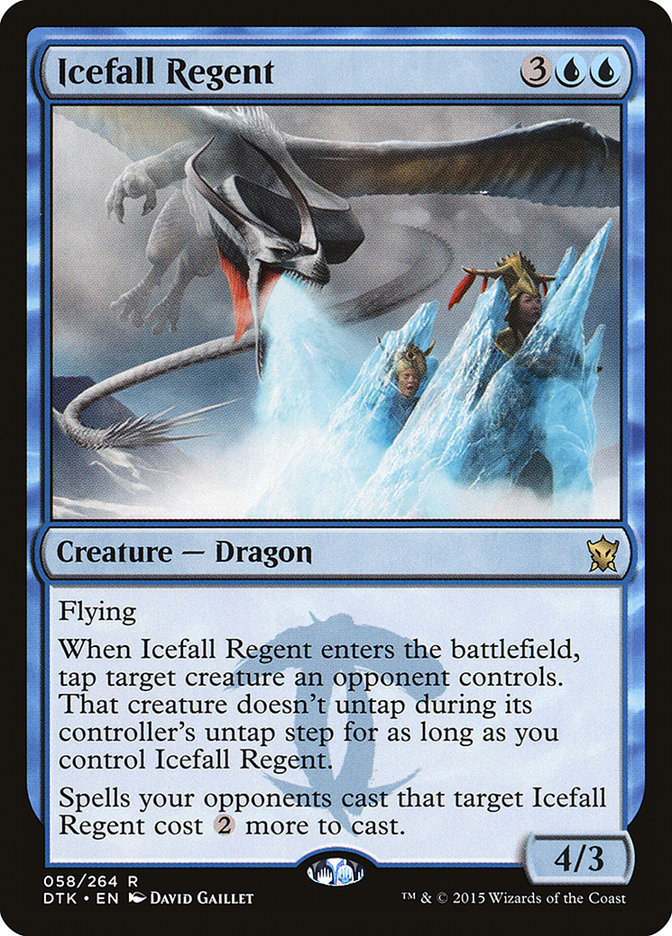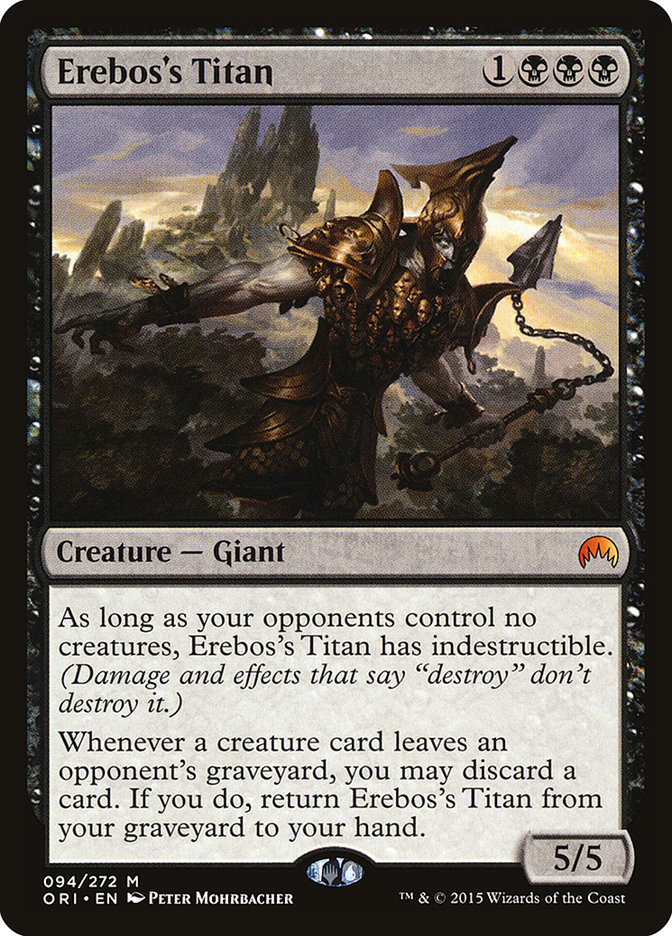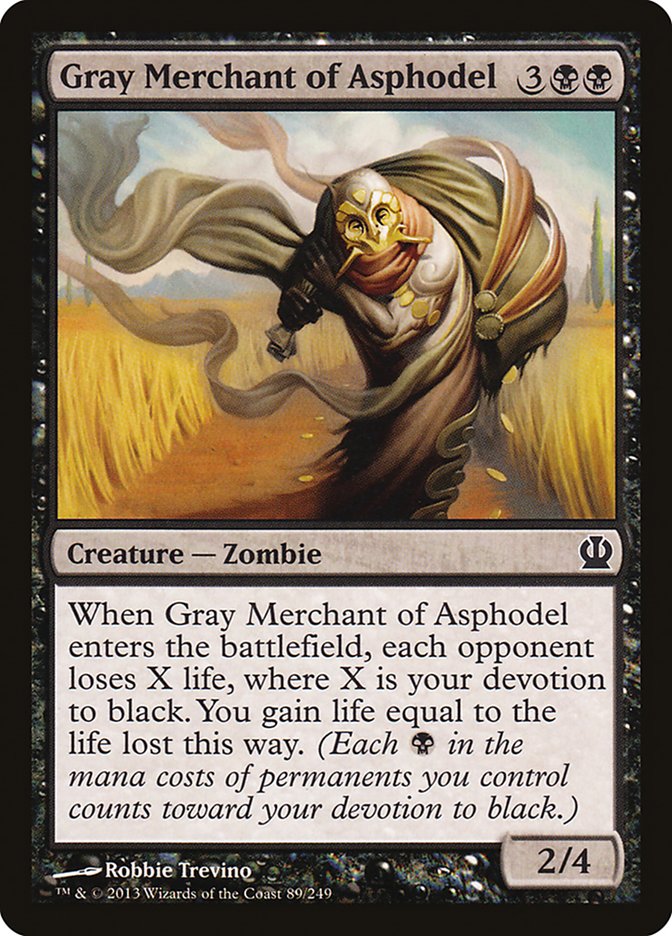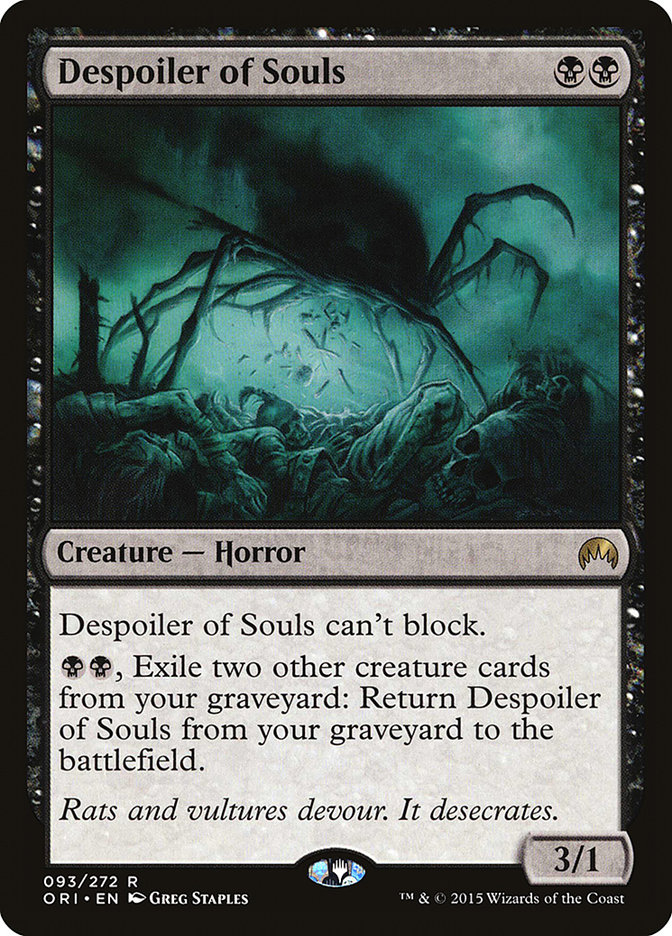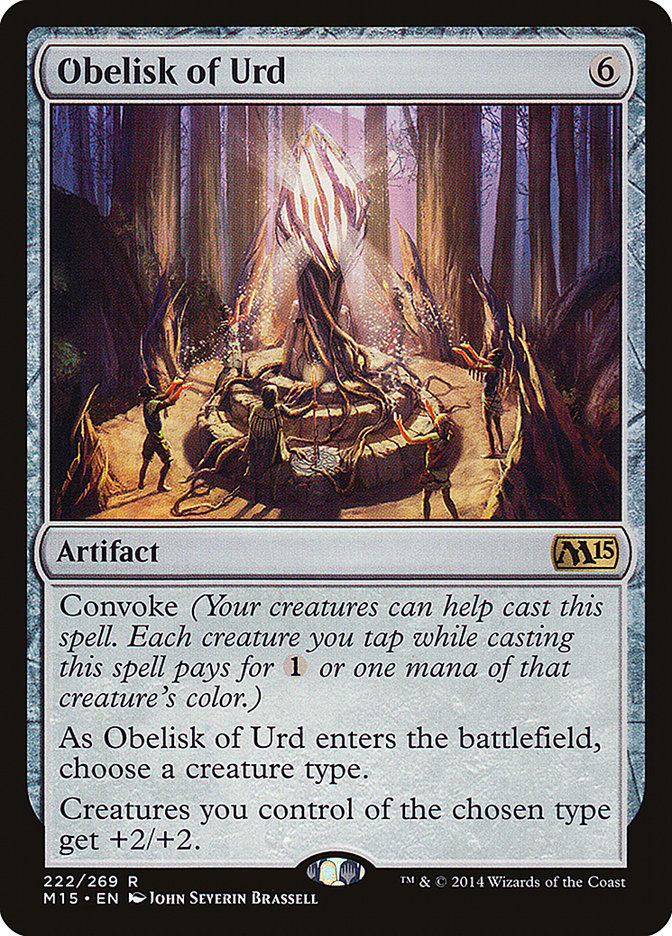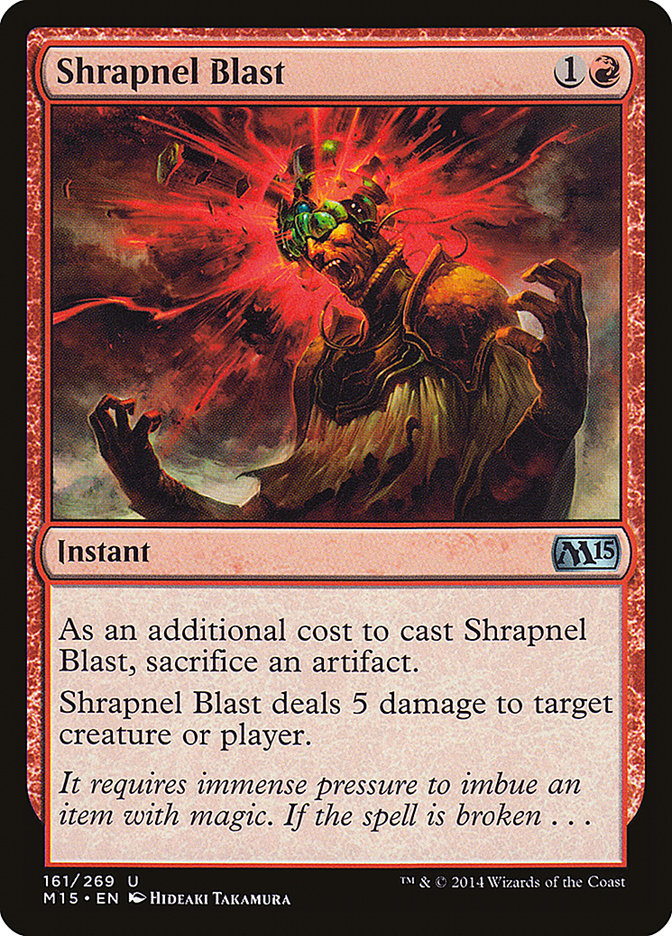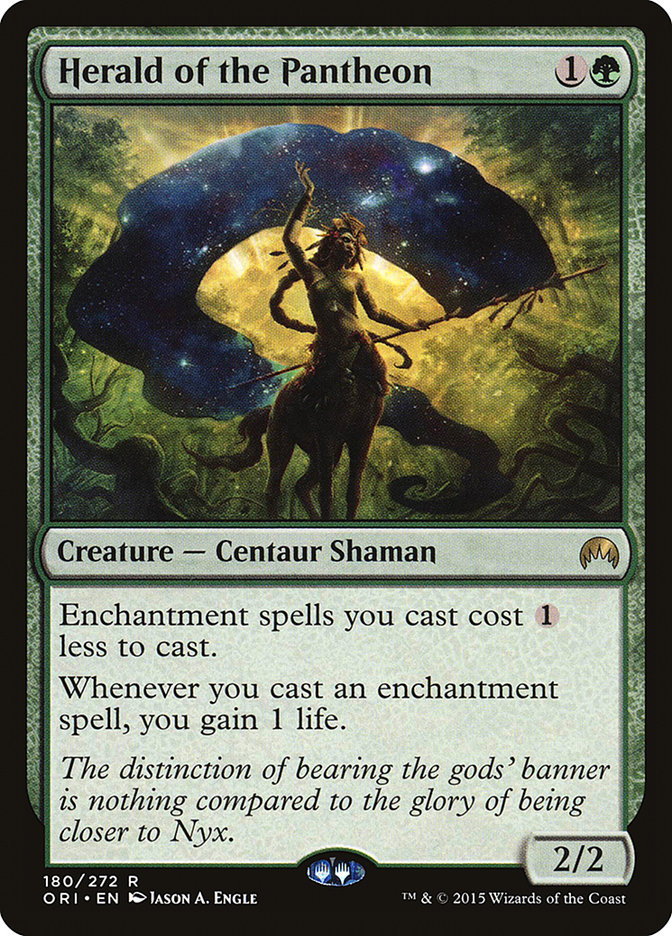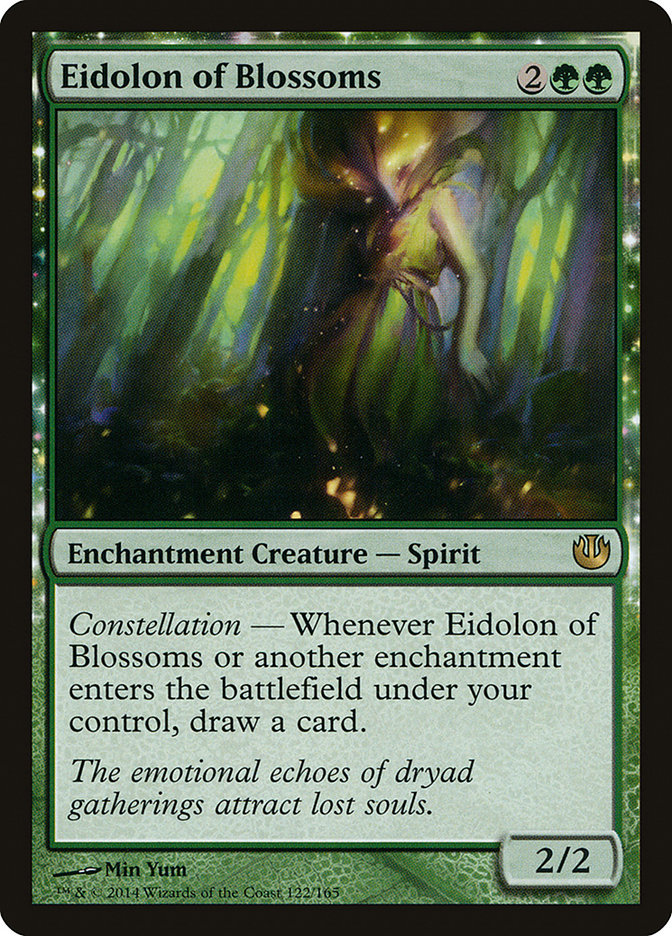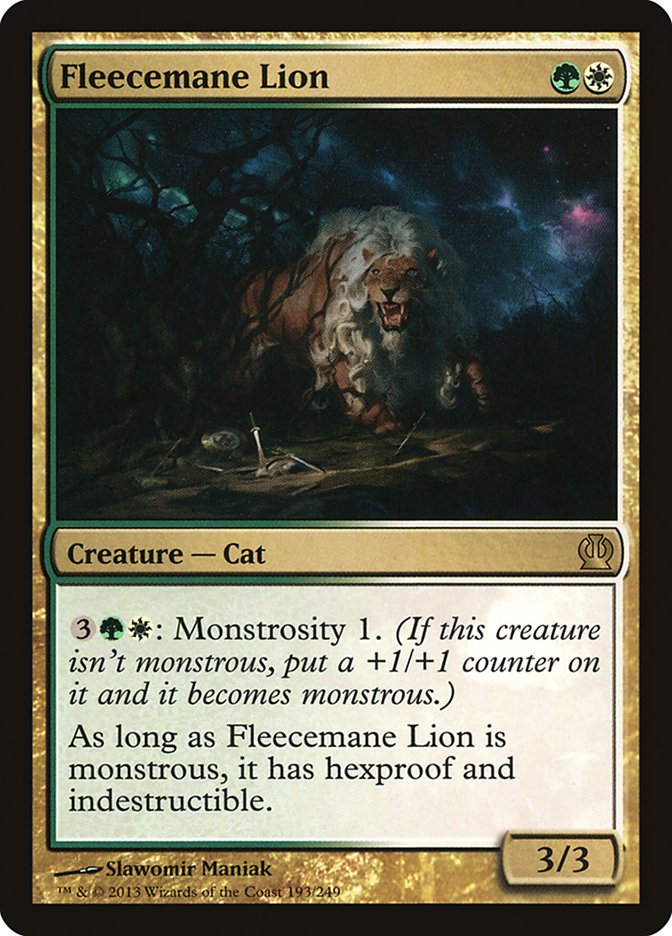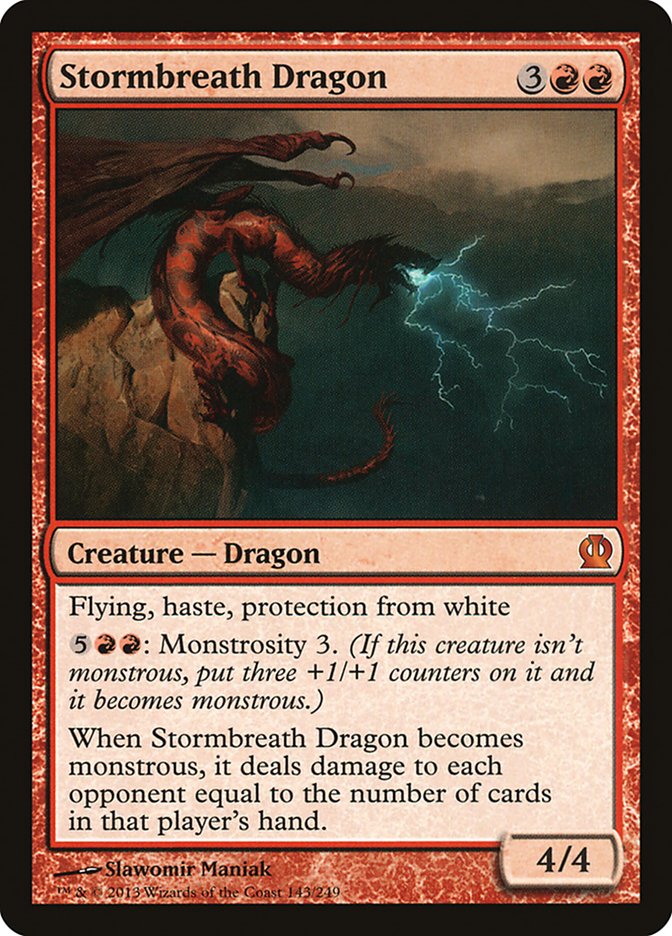A new set can often bring more cards to a format than you may realize at first. As we’ve seen with Blue Devotion, there can be powerful cards (like Thassa, God of the Sea and Master of Waves) that are legal in a format but don’t see any play because there just isn’t enough support for them. When a new set comes out, it can awaken the hidden potential of cards that have been lurking in a format, just waiting for the right moment. The trick is to find the hidden gems in the old sets that are given new life rather than just trying to add new cards into the mix of cards you were playing before.
Similarly, some cards that were great will suddenly lose stock or fall off the map entirely. Maybe they’re replaced by a better card, or maybe a new card was printed that the old one lines up very badly against. It’s important to recognize when a card you’d been relying on may not function the way you’re used to.
So today, I’m going to try to work through some old cards that I think could look a little different in the coming first weeks of the new Standard.
Most obviously, Magic Origins really pushed cards with more than one colored mana symbol compared to recent sets. This means that every card with Devotion needs to be reevaluated, particularly outside of green, where they were already good, and maybe red, which didn’t get anything that cost RR or 1RRR, just a couple 1RR creatures.
White
White Devotion hasn’t really been much of a thing because there’s never been much payoff. Heliod, God of the Sun or a multicolor God are the best cards that specifically count Devotion here, and they’re all among the weaker gods.
As bad as the card is, Heliod, God of the Sun may deserve a second look. If you have any other white card on the battlefield along with Archangel of Tithes and Heliod, Heliod will be a creature – and your Archangel of Tithes with have Vigilance, so its taxing ability will work on both offense and defense. If you splash blue you can play Ephara, God of the Polis, which will reward the same devotion and draw cards when you make creatures with Heliod, and so long as we’re here Dragonlord Ojutai can also benefit from Heliod’s Vigilance as it will never lose Hexproof.
Beyond that, the biggest payoff for devotion is usually Nykthos, Shrine to Nyx. The trick, in decks that aren’t green, is to make sure your deck functions when you don’t have Nykthos. In green, you fill your deck with cards that make mana anyway and you can still cast your expensive spells without it. For the other colors, we have to do things a little differently. The best option is something like what Red Devotion used to do with Stormbreath Dragon – find something you can cast either way where you can sink that extra mana for a better effect if you happen to have it.
Mastery of the Unseen is obviously my favorite mana sink, but Heliod, God of the Sun can do an almost passable impression of that. Kytheon’s Irregulars is another option – on normal amounts of mana, the ability is still very good, but it you have Nykthos, Shrine to Nyx, you can likely just shut down all of your opponent’s creatures.
Secure the Wastes is another card that obviously scales up very well, and it’s strong in the late-game without Nykthos but downright game-ending when you have Nykthos on a crowded board.
Knight of the White Orchid is perfect for a White Devotion strategy that’s trying to have the ability to use extra mana, since beyond just costing WW it can function as an additional mana source, serving a similar role to green’s mana creatures.
You can also slant the deck to be more controlling and try to cast something like Elspeth, Sun’s Champion or Ugin the Spirit Dragon, playing enough lands that you can cast them either way but expecting that sometimes thanks to Nykthos they’ll come out way ahead of schedule and just end a game. If you’re going this route, Mage-Ring Network can function as a backup Nykthos – just be sure you still have enough white sources in your deck to cast all your spells.
Blue
Blue Devotion isn’t so tricky – we’ve seen the deck before, so we know the payoffs and we know how they operate (or so it would seem). I’d posit, based on everything I’ve tried, that the cheap blue creatures fairly conclusively just aren’t good enough to win games. Cloudfin Raptor may have been the unsung hero of Blue Devotion; other one drops just don’t hit anywhere near as hard, and that lets other decks catch up and overpower you. Moreover, Mutavault was absolutely essential to the aggressive nature of that deck. We got some new good options, but I don’t think we can actually model this deck after that deck.
If Blue Devotion is going to work, I think it has to look to go bigger. Instead of trying to curve out into an attacking Thassa, God of the Sea or Master of Waves for ten power, maybe we’re just trying to get cards like Claustrophobia, Shorecrasher Elemental, or even Icefall Regent onto the battlefield and then use Nykthos, Shrine to Nyx to cast things like Dragonlord’s Prerogative or Ugin, the Spirit Dragon.
Black
In black, Erebos’s Titan and possibly Despoiler of Souls really call our attention to Devotion, reminding us of the glory days of Gray Merchant of Asphodel. It feels like there should be something there, but without Nightveil Specter, Lifebane Zombie, or Underworld Connections, it’s hard to figure out what we’re doing for three mana. Liliana, Heretical Healer jumps out as the best 1BB creature, but when that’s working as intended the planeswalker side doesn’t even contribute to your Devotion.
Despoiler of Souls is interesting with Mogis’s Marauder even though the exact Devotion count never actually matters with that creature – just having the resilient 3/1 is great for an aggressive deck that has a way to push it through blockers. Whether that deck wants to bother with Liliana, Heretical Healer or Erebos’s Titan is an open question, and if it does, Gray Merchant of Asphodel may become a potent finisher.
In short, Mono-Black Devotion may be back, but I think R&D was careful not to bring back the same decks that were good before – if you want to take advantage of the new abundance of enablers, you’re going to have to look to more novel approaches rather than modeling it on what came before for this one. The pieces to recreate it just aren’t there.
Changing gears, a big winner is Obelisk of Urd. This card has been on the cusp of playability in white for Soldiers before rotation or black for Humans or Warriors more recently, but now with Elves and Goblins as fully-supported tribes it deserves another look.
Obelisk of Urd is unbelievably strong with Dragon Fodder, Hordeling Outburst, and Goblin Rabblemaster. If your opponent is playing a creature deck rather than a deck with sweepers and counterspells or artifact removal, it’s almost impossible to beat a curve of one-mana Goblin into Dragon Fodder into Hordeling Outburst + Obelisk of Urd. On turn four you’re untapping with six 3/3 creatures, and every creature you play for the rest of the game is huge. Trying to fight that with blockers and spot removal is beyond hopeless.
It’s a little less explosive with Elves, but Dwynen’s Elite, Elvish Visionary, and Sylvan Messenger help Elves go wide enough that it’s certainly worth consideration in that deck.
Another potential big winner is Shrapnel Blast. Artifacts in Standard have been horrible for the past year or so, so it’s been hard to find enough of them that you can put into a deck to cast Shrapnel Blast. But cards like Pia and Kiran Nalaar and Thopter Engineer are right on the cusp of playable, and each offers artifacts you can easily sacrifice. Beyond that, Hangarback Walker is a resilient way to make sure you have an artifact since you’ll get at least one more when it dies, and Pyromancer’s Goggles offers a big combo finish with Shrapnel Blast.
Speaking of big combo finishes, Howl of the Horde + Shrapnel Blast is 15 damage if you attack with a Thopter first, and it also picked up Exquisite Firecraft and Magmatic Insight as powerful spells to copy that are relatively cheap to cast.
The pull toward artifacts, if it happens, would make players look for answers where they’d previously only been concerned with enchantments. This would cause an increase in Reclamation Sages as compared to Back to Nature, an effect which is also amplified by the potential creation of Elves as an archetype, and possibly favors Kolaghan’s Command, a card that’s much better when it sometimes matters that it can kill an artifact.
The other major Theros theme that Magic Origins tries to offer a last breath is Constellation, the “Enchantments Matter” strain throughout the set offers Herald of the Pantheon, Starfield of Nyx, Sigil of the Empty Throne, and Helm of the Gods to work with all that has come before.
This means it’s time to give Eidolon of Blossoms another shot, as that’s the card that’s best with Starfield of Nyx and Herald of the Pantheon and it was always the best constellation card anyway. Its old best friend was Doomwake Giant, which may or may not be where we want to be now – that kind of depends on whether the format is more about Goblins, Elves, and Soldiers or about counterspells and Dragons.
For the most part, we’ve seen where this goes, and there isn’t much new here. The one real twist is that Starfield of Nyx gives you a Reanimator angle that lets you ignore casting costs. Most of the expensive enchantments in Standard aren’t really that impressive even once they’re on the battlefield, but Archetype of Endurance is a possible exception.
My personal favorite enchantment package with Eidolon of Blossoms is Chained to the Rocks, Nylea’s Presence, and Heliod’s Pilgrim. This is particularly good with Sigil of the Empty Throne, as you’ll be looking to maximize the number of cheap enchantments you can cast and Nylea’s Presence helps find more while making a 4/4 if you wait until after Sigil’s in play. Additionally, if you’re playing Starfield of Nyx, Banishing Light can become awkward as you might not want it to become a creature, which would make it easier for your opponent to kill; Chained to the Rocks is an aura, so Starfield of Nyx doesn’t turn it into a creature – which is for the best in this case.
Another card that might just get a little better because of the mechanics in Magic Origins is Avatar of the Resolute, which plays well with Renown, especially Honored Hierarch. I don’t know that there’s a enough good Renown creatures to really make the difference, but it’s worth keeping in mind.
Beyond this, another thing that always changes as metagames change is the positioning of various removal spells now that they’re basically all printed to be somewhat narrow in one way or another. Magic Origins offers plenty of good creatures in aggressive strategies, some of which promote mono-color decks, and few good multicolor creatures. As a result, Ultimate Price will be slightly better positioned than it was before. Similarly, Magic Origins probably has more good small creatures and incentives to play them than big creatures, which means Searing Blood may be quite a bit better than it was, especially as it picked up Exquisite Firecraft to strategically compliment it. Creatures like Nissa, Vastwood Seer and Knight of the White Orchid mean that slower decks that might not have had a useful target for Searing Blood otherwise are more likely to now. Plus, there’s still always Den Protectors to target.
As for cards that got worse, this isn’t a financial column, so I’m not really interested in identifying cards that are no longer useful because they’ll be replaced by better cards, what I’m interested in is finding cards we may have prioritized that we now might not want to go as far out of our way to use.
Fleecemane Lion, for example, loses a lot of stock because Languish kills it even after it’s Monstrous, which really changes its dynamic against control decks. Previously, once it was Monstrous it was a potential huge problem in the late-game… now it will often be just another creature.
Another card that similarly gets easier to answer is Stormbreath Dragon. This could fork Crux of Fate in some decks, but it dies along with all the smaller creatures to Languish, white now has an answer to it with Celestial Flare, blue decks gain Harbinger of the Tides and red has another good answer with Exquisite Firecraft.
I’m not sure about other cards that clearly lose significant ground, but I suspect there are others. That should become clearer as we see what direction things actually seem to be moving this weekend at the Open Series in Chicago.
I’m sure this list isn’t exhaustive, as there’s no real search term to enter for “cards that might be good now” – you just have to work through all the options and try to find what new synergies pop up. The difficulty of just manually doing this is why a deck can sometimes remain hidden long into a format, especially if it’s based on an old forgotten card, rather than something new – everyone knows to look for homes for the new cards.

